Twenty-four rising sixth graders have now been set free for summer vacation. And I’ve been set free for two weeks of my own summer vacation (most of which will be spent reading because I now know more about what I don’t know– so Socrates).
In total, my kids learned 15 different Common-Core aligned objectives in four weeks (and only 12 instructional days!). To look at evidence-based growth, all teachers in my program gave an initial assessment (standardized and Common-Core aligned) on the first day and gave the same assessment on the last day. The data tracking program calculated a high but realistic growth goal (based on the growth of the top 25% of all students in summer school for the previous year) for each child. On average, my class accomplished 104% of their growth goals with a range from 47% to 166% accomplishment. ALL children grew at least 25 points from their initial to summative tests and the most outstanding growth was 88 points from start to finish.
A second data system– exit ticket scoring– was used to track daily mastery of objectives. As you can see, the students continuously increased the mastery over the course of the four weeks:
Honestly, this is all very frustrating and heartbreaking for me. Even though my class did fairly well on paper, there were some who did not accomplish their data-based growth goals but who made outstanding, permanent personal growth. There were others who walked through the door hating math (and who weren’t afraid to admit that!) but who left feeling inspired and confident. That growth is what I really wanted to capture. I tried two activities on the last day to assess my students’ enjoyment of the material.
The first activity: Math Maps
This activity allows students to map their overall knowledge. The idea is not to include every single detail, but to connect and synthesize the overarching takeaways. I took down all of my anchor charts, recycled leftover handouts, and had them take home their notes, so all they got was the sheet shown above. I was astounded at the quality of their products! Most of the class worked in groups of four students each, but some individuals chose to work alone.
When they were finished with their Math Maps, I asked each student to write me a letter about math. It could include the parts they loved, the parts they hated, how their mindsets about math changed, which parts they anticipate using in sixth grade, or just about anything else they wanted to mention. These were also wonderful, erring on the straight up honest side.
Note: the “Crazy One” is a way of remembering to multiply the numerator and the denominator by the same factor when finding fractions with a common denominator. Also, I stressed that the resulting fractions would be equivalent because multiplying by one– even a “Crazy One” or a one in disguise– produces the same number. To practice identifying “Crazy Ones,” the kids had to come up with a ridiculous dance move whenever one appeared on the Promethean or white board. This happened A LOT. There were more crazy kids than “Crazy Ones.”
“I liked math class because Ms. Y was fun but I didn’t like working because I’m lazy and don’t like to work very much.” (I don’t make these things up, I swear).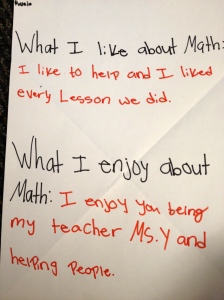
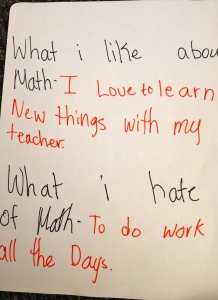
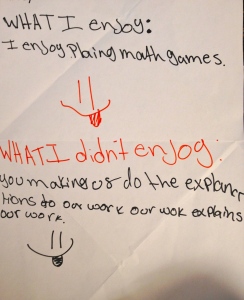
“What I didn’t enjoy: you making us do the explanations (for) our work. Our work explains our work.” This is super funny because we worked SO hard on those explanations. Common Core is all about explanations because articulating your thinking is a critical skill for academic success.
This child showed the most personal growth in collaborating with others, thus the “Go Teme.” (Team).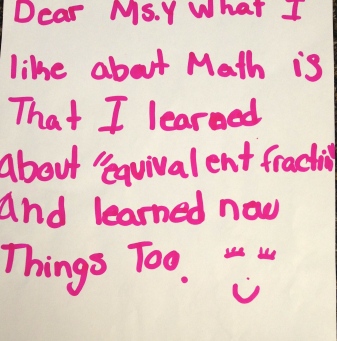 I told them that “equivalent fractions” was a big long vocabulary word that sounds like it should be said by the Queen of England. So they got up out of their chairs and used a shrill English accent to say it every single time. Some of the kids talked themselves through the summative assessment in a shrill English accent.
I told them that “equivalent fractions” was a big long vocabulary word that sounds like it should be said by the Queen of England. So they got up out of their chairs and used a shrill English accent to say it every single time. Some of the kids talked themselves through the summative assessment in a shrill English accent.
“I love math because I learned new things. I love math now I learned sooo much with the best teacher.”
Finally, I had one student who spoke no English at all but seemed to take away more than anyone else. In her letter she basically writes that she learned so many things she didn’t know before the summer. She hopes that she can see her teacher someday again when she knows English better and can tell her everything without translating.
I will miss my kids so much! This happened in four exhausting and wonderful weeks. What can happen in a year? One month until I start to find out!
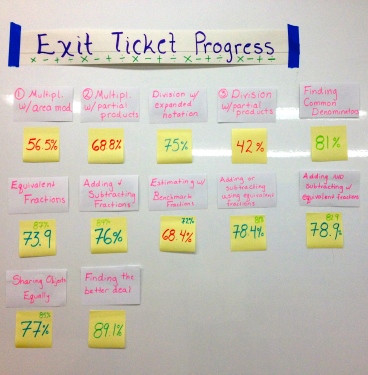

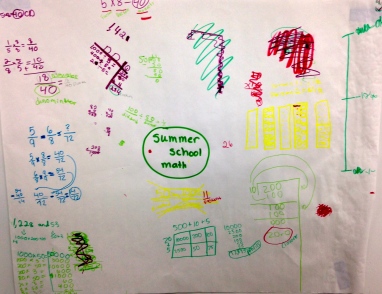
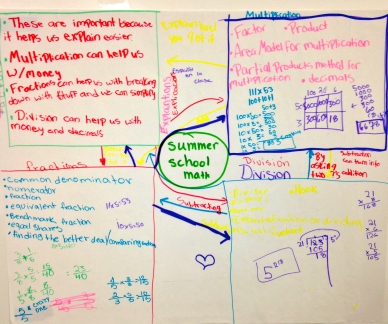
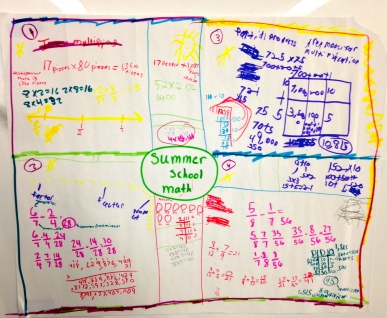
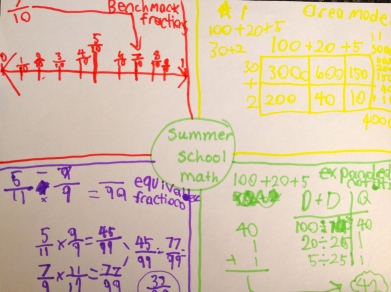
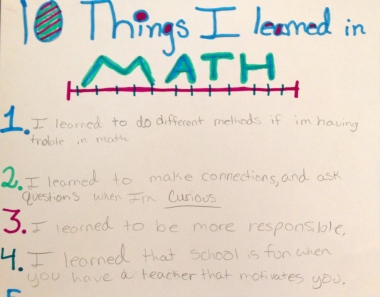


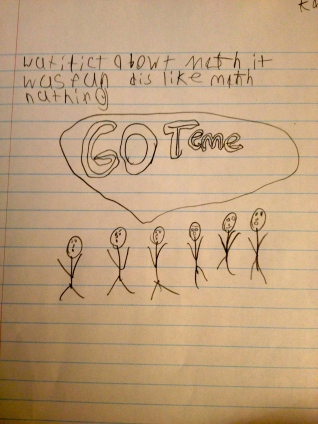
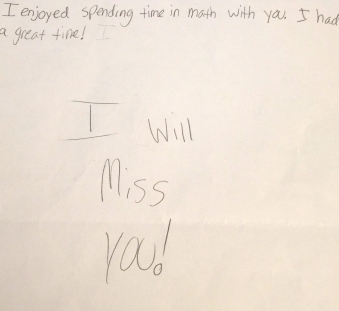
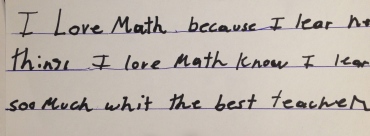
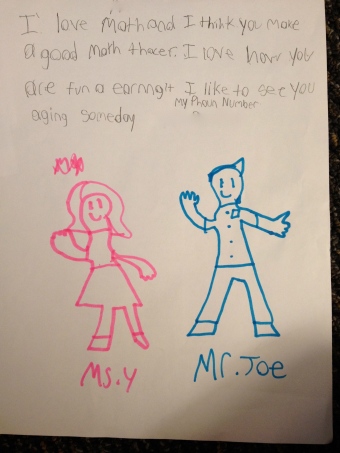
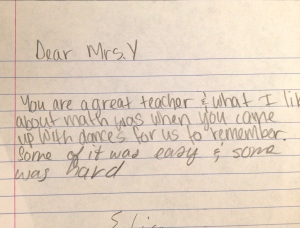
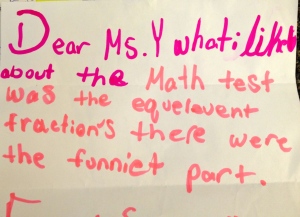
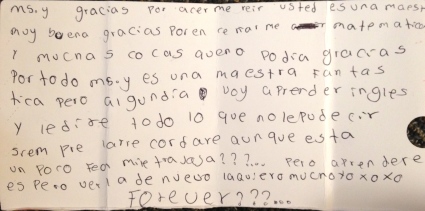
Dear Alesa, You are already a very accomplished teacher.Congratulations on helping these students help themselves. Their progress is stunning. The things you could’t measure exist now to help them in the years to come. Always they will have that kowledge that there was a teacher who passionately believed in their capacity to learn. What a gift. Love, NOnna
LikeLike
Dear Alesa, When I read your blog entries, I am awed, delighted, sometimes teary-eyed, always always thinking of how very very fortunate your students arre going to be. Teaching will always be that mix of jubilation and sadness that not all of your dreams for your students can be realized. May you have the stamina to persevere when perfection is not possible. I love you, and I’m so very proud of you. Nonna
LikeLike